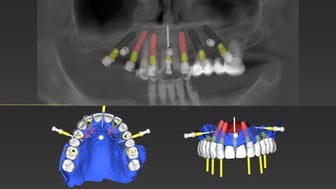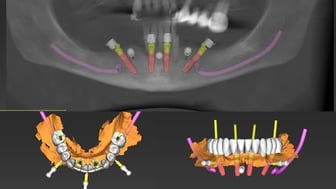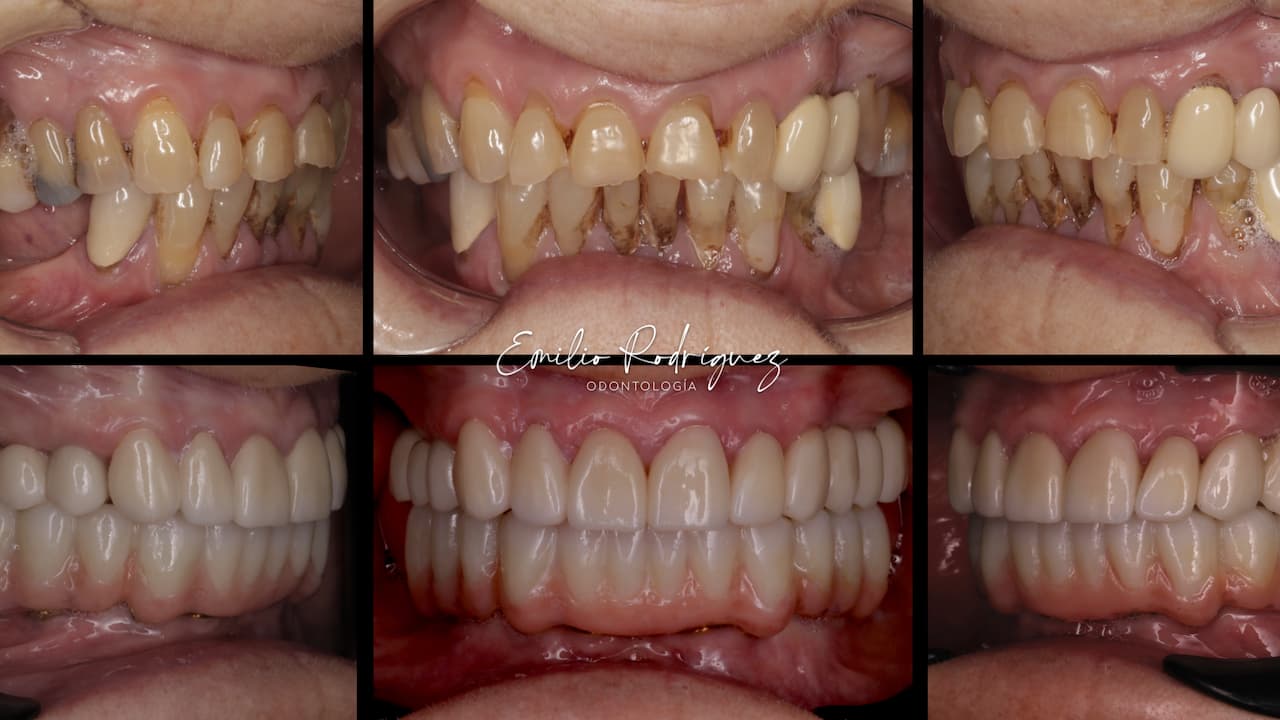Introduction
Dr. Ion Cojocaru is a specialist in Oral Implantology at Denterra Clinic in Brașov, Romania, and an expert in advanced oral surgery. In this clinical case, he used the PIC system Gravity for a full rehabilitation with implants in both the upper and lower jaws.
Clinical case
The patient is a 56-year-old woman who came to the clinic reporting discomfort while chewing, dental mobility, and bleeding gums.


Dr. Cojocaru’s team decided to implement a solution to reduce inflammation and restore dental function through rehabilitation of both the maxilla (where low bone density was observed) and the mandible.
The treatment plan involved rehabilitating both arches using Fast & Fixed therapy with BlueSky implants. To address the low bone density in the maxilla, they increased primary stability by using 3.5 mm drills and 4.5 mm diameter implants for the upper jaw.

Initial treatment plan designed for Fast & Fixed therapy with BlueSky implants
The team used exocad software for the initial diagnostic wax-up design, Codiagnostix for implant planning, RealGuide for surgical guide overlay, and exocad again for the provisional prosthesis design.


Implant planning for upper and lower arches
The procedure included extraction of compromised teeth and decontamination using HELBO. Then, BlueSky implants were placed—6 in the maxilla and 4 in the mandible—using the ProGuide surgical kit, followed by placement of prosthetic abutments. Precise implant positioning was captured using photogrammetry with PIC system Gravity.


PIC transfer capture for the upper and lower jaw
After the initial capture, soft tissue grafts and sutures were performed, and a 3D-printed screw-retained provisional prosthesis was placed. This prosthesis was printed using the SprintRay Pro2 printer with OnX Tough 2 resin.



Design and result of the provisional prosthesis based on the first capture
Six months later, the patient proceeded to the final restoration phase. The exact implant positions were recaptured using PIC system Gravity, soft tissue was scanned, and a PMMA prototype was fabricated. Occlusal and esthetic parameters were verified, followed by placement of the final restorations.


The final restoration was made with Myio liquid ceramic over a zirconia framework, using ICE zirconia from Zirkonzahn for the structure and high-translucency zirconia for the esthetic and functional components.



The treatment concluded with FP1-type restorations with direct connection, meeting all functional and esthetic criteria.


It’s important to highlight that both the provisional and final prostheses achieved a perfect passive fit and optimal adaptation in terms of occlusion and soft tissue integration. This success underscores the precision of PIC system Gravity and the time-saving benefits for both the patient and dental team through fast and accurate captures.

This case was performed by Dr. Ion Cojocaru at Denterra Clinic in Brașov, Romania, in 2025.


